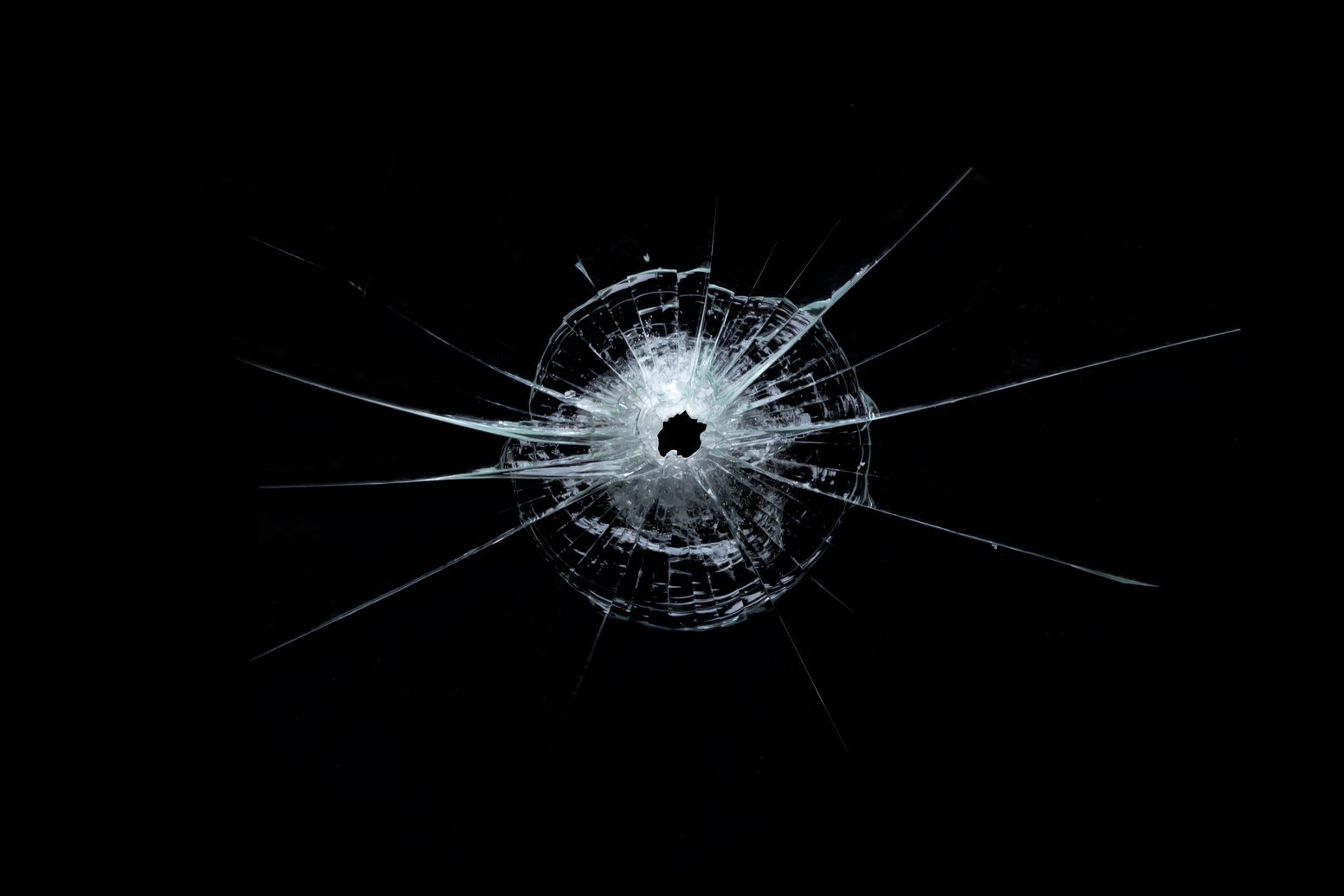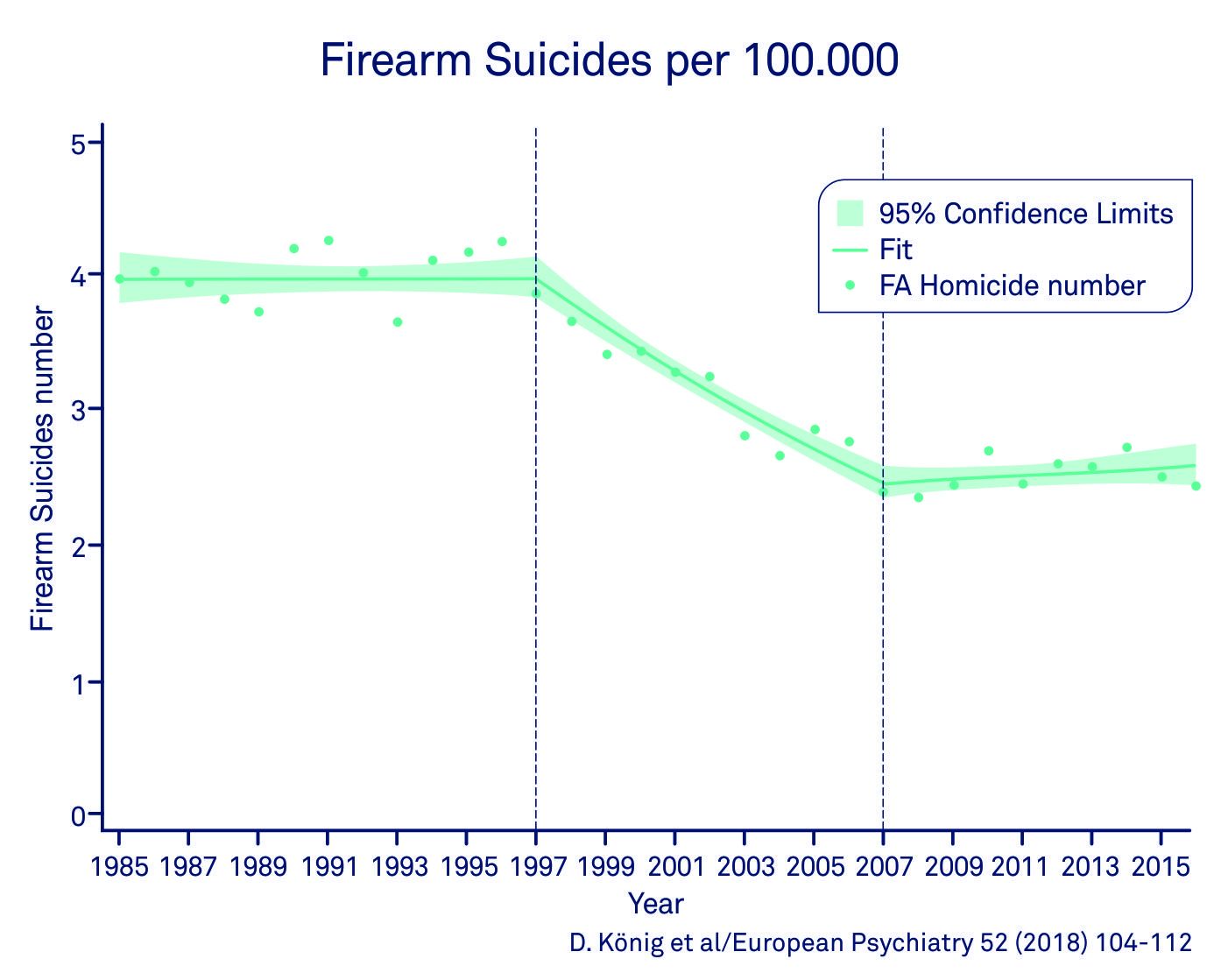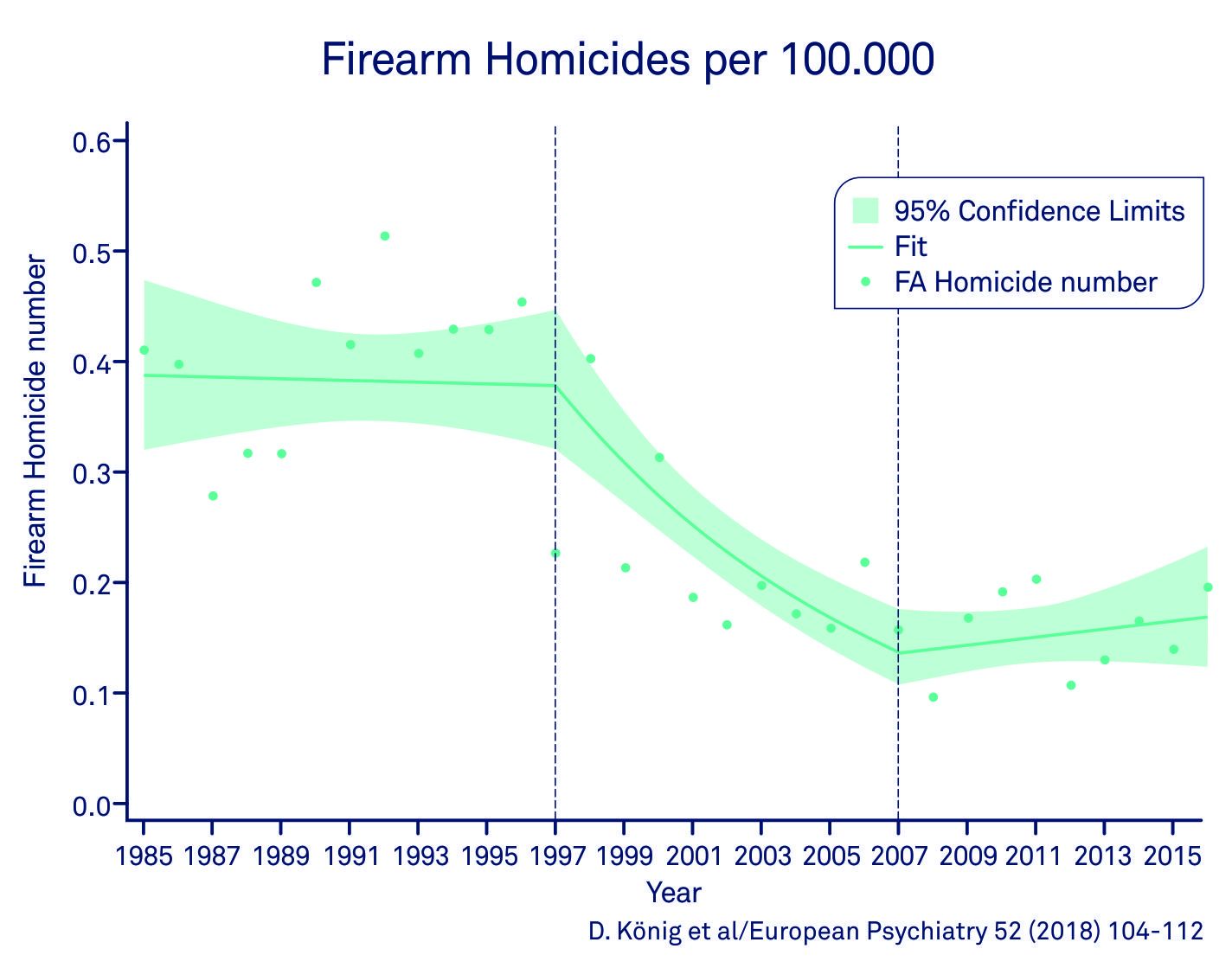
(Vienna, 18 July 2018) A statistical analysis carried out by researchers from the Department of Psychiatry and Psychotherapy and the Center for Medical Statistics at the Medical University of Vienna shows that stricter firearm legislation is associated with a reduction in firearm-related murder and suicide rates. There had been a continuous decline in these figures in Austria for over 20 years following the introduction of stricter firearm legislation in the 1997 reform. However, this trend has been slowing down ever since the 2008 economic crisis. A possible explanation for this may be that the general feeling of insecurity among the population led to more people obtaining licences for guns, which significantly increased the percentage of firearms involved in murders and suicides.
In Austria, the number of murders and suicides had been falling continuously for decades. There was even a change in the percentage of acts of violence involving firearms: since the firearm legislation reform in 1997, when it became more difficult to obtain a firearm, there was a continuous decline in the number of new licences, which is also reflected in the statistics for firearm-related murders and suicides. For example, in 1998 there were 3.7 firearm-related suicides per 100,000 head of population and, by 2008, this figure had dropped to 2.4.
Existential fears caused by the global financial crisis – more guns bought in Austria
This welcome trend has been slowing down since the 2008 economic crisis. Suicide rates started to rise again in Western nations, such as the European countries and Canada. "It is well known that the threat of unemployment can be a contributory factor in suicides," explains lead author Daniel König from the Department of Psychiatry and Psychotherapy, MedUni Vienna/Vienna General Hospital, "this threat increased following the economic crisis in 2008, as did the level of stress within the population – even in Austria. For the first time there was an increase in the number of new firearm licences issued."

The percentage of firearms used in murders and suicides has increased once again
As a consequence, the previous downward curve in so-called "firearm-related" suicides flattened out significantly. Since 2008, no further decline has been observed in Austria. The number of firearm-related murders has even increased, say the experts.
Whereas the proportion of firearm-related suicides rose continuously from 14.3% to 18.7%, between 1985 and 1998, following the 1997 firearm-legislation reform, it dropped continuously to 15.5%. After 2008 it rose again, reaching 17.7% in 2016.

The pattern of firearm-related murders is even more striking. Between 1985 and 1998, the percentage of firearm-related murders increased from 4.1% to 9.0% and, following the firearm legislation reform, fell by around 6.4% a year. In contrast, since 2008 one can see an annual increase of around 10%.
The study shows that firearm-related murder and suicide rates fell significantly year-on-year after legal access to firearms was made more difficult in 1997. The slow-down in the trend relating to firearm-related suicides and a reversal of the trend in firearm-related murder rates in 2008 could be partly attributed to an increase in the issue of firearms permits following the economic crisis. In view of the growing sense of insecurity amongst the population, König expects a further increase in gun ownership in the near future and a corresponding increase in the probability of firearm-related suicides. Counteracting this trend is an important challenge for society.
Service: European Psychiatry
Austrian firearm legislation and its effects on suicide and homicide mortality: A natural quasi-experiment amidst the global economic crisis
Daniel König, Patrick Swoboda, Robert J. Cramer, Christoph Krall, Vita Postuvan, Nestor D. Kapusta; European Psychiatry 52 (2018) 104–112.
https://doi.org/10.1016/j.eurpsy.2018.04.006